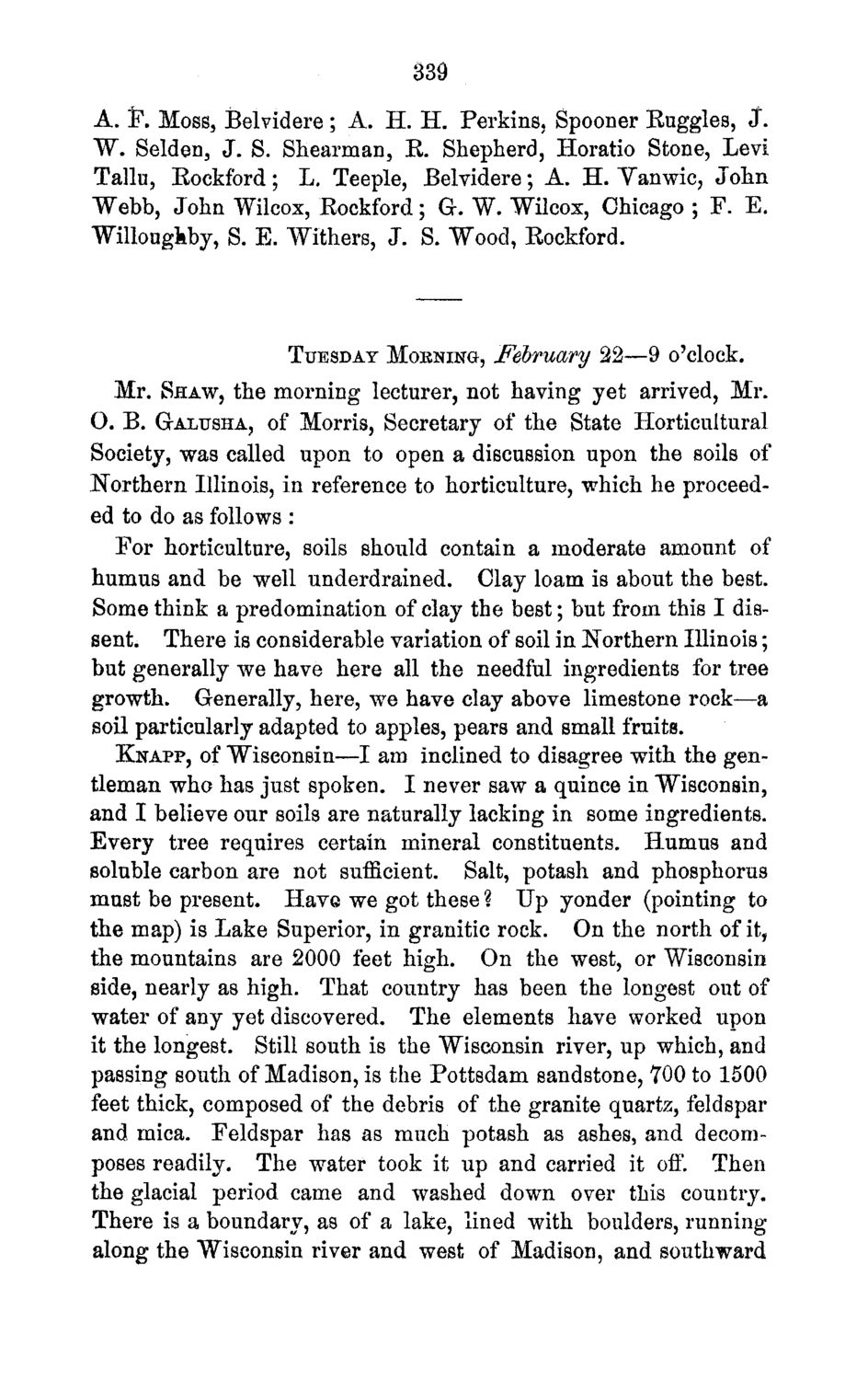| |
| |
Caption: Board of Trustees Minutes - 1870
This is a reduced-resolution page image for fast online browsing.

EXTRACTED TEXT FROM PAGE:
339 A. t \ Moss, Belvidere; A. H. H. Perkins, Spooner Buggies, J. W. Selden, J. S. Shearman, K. Shepherd, Horatio Stone, Levi Tallu, Eockford; L, Teeple, Belvidere; A. H. Yanwic, John Webb, John Wilcox, Rockford; G. W. Wilcox, Chicago ; F. E. Willougkby, S. E. Withers, J. S. Wood, Rockford. TUESDAY MORNING, February 22—9 o'clock. Mr. SHAW, the morning lecturer, not having yet arrived, Mr. O. B. G-ALUSHA, of Morris, Secretary of the State Horticultural Society, was called upon to open a discussion upon the soils of Northern Illinois, in reference to horticulture, which he proceeded to do as follows : For horticulture, soils should contain a moderate amount of humus and be well underdrained. Clay loam is about the best. Some think a predomination of clay the best; but from this I dissent. There is considerable variation of soil in Northern Illinois; but generally we have here all the needful ingredients for tree growth. Generally, here, we have clay above limestone rock—a soil particularly adapted to apples, pears and small fruits. KNAPP, of Wisconsin—I am inclined to disagree with the gentleman who has just spoken. I never saw a quince in Wisconsin, and I believe our soils are naturally lacking in some ingredients. Every tree requires certain mineral constituents. Humus and soluble carbon are not sufficient. Salt, potash and phosphorus must be present. Have we got these ? Up yonder (pointing to the map) is Lake Superior, in granitic rock. On the north of it, the mountains are 2000 feet high. On the west, or Wisconsin side, nearly as high. That country has been the longest out of water of any yet discovered. The elements have worked upon it the longest. Still south is the Wisconsin river, up which, and passing south of Madison, is the Pottsdam sandstone, 700 to 1500 feet thick, composed of the debris of the granite quartz, feldspar and mica. Feldspar has as much potash as ashes, and decomposes readily. The water took it up and carried it off. Then the glacial period came and washed down over this country. There is a boundary, as of a lake, lined with boulders, running along the Wisconsin river and west of Madison, and southward
| |